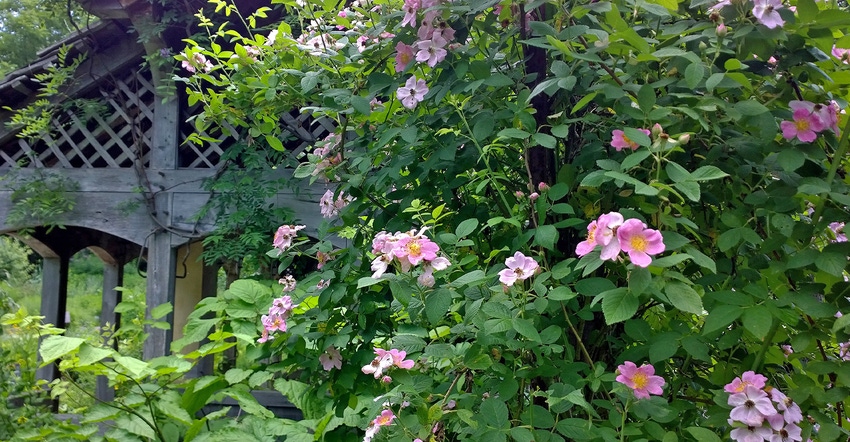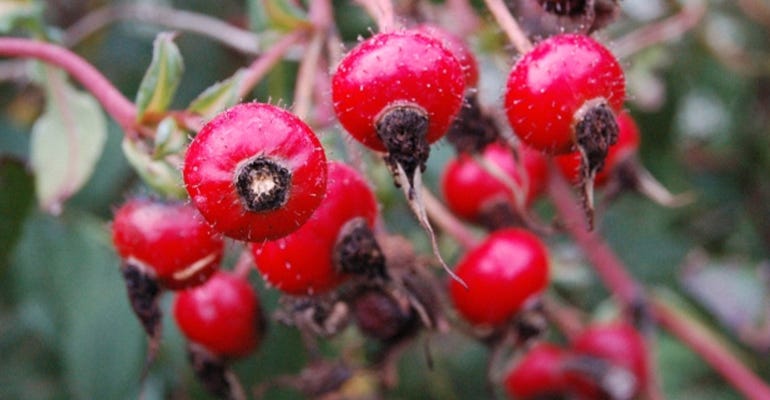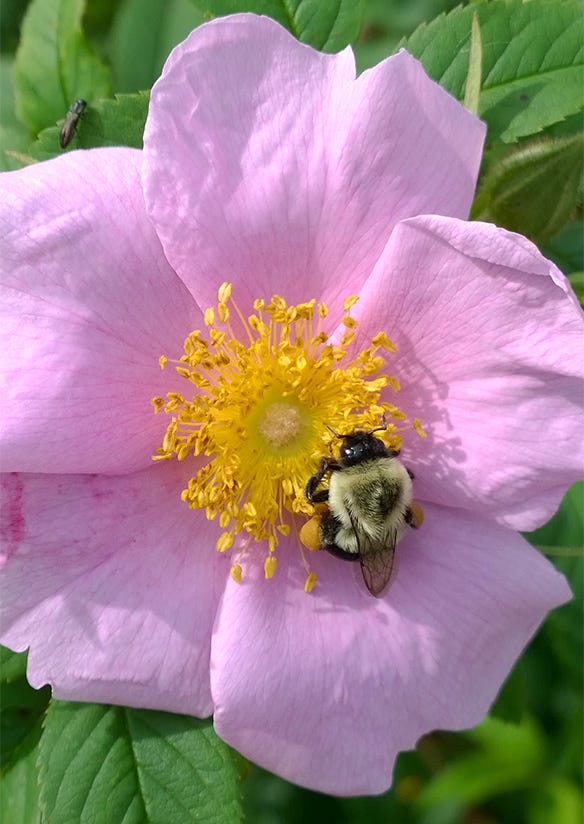May 31, 2019

Native roses are prickly, difficult to handle and considered worthless by most. But I enjoy a challenge, so I enjoy wild roses.
I love the herby-sweet fragrance of their single pink flowers, and apparently so do bumblebees, who seek their nectar and buzz them to shake out pollen.
Wild roses produce hips, deep red fruits that are eaten by bluebirds in late winter — unless I get to them first. They are high in vitamin C and make a tart warm tea on a cold winter day. Split open the hips, remove the seeds, and steep the pulp and skin in water. Freeze whole rose hips to store.
To propagate, place seeds in a plastic bag, add in moist sand and store in the refrigerator for three months. Then sow the mixture in a pot or on the ground, cover with one-eighth inch of potting soil or topsoil, water, and wait and water for two weeks for the seeds to sprout. Wait another four weeks before transplanting to their final home.
Roses to plant
Here are four wild roses that grow well in any farmstead:

GARDEN COMPANION: The Carolina rose grows well in a garden setting. Consider planting wild strawberries to fill the gaps as this rose has space between each stem.

Carolina rose. Carolina rose suckers in the garden and is a good companion with wild strawberry. Both are equally aggressive, but together they are steadfast and make good companions. This 1- to 2-foot-tall rose has stems that are far apart, and when growing alone are poor at keeping weeds out. Wild strawberry fills the gaps and covers the soil in a way that prevents weeds, like a green mulch. The tiny, flexible thorns are tolerable.

FOOD FOR WINTER: Many wild roses, such as the prairie rose, produce red fruit called hips. Birds and other wildlife eat these during the winter months.

Prairie rose. Prairie Rose also suckers but slowly and densely so, preventing weeds. It has single, fragrant rose-pink flowers and pure yellow stamens that bees adore. It has lustrous red stems that are especially noticeable in winter and slightly prickly thorns. It grows well in average clay garden soils.

WETLAND BEAUTY: The swamp rose flourishes under wet conditions. Plant them in areas where water ponds or in soils that hold water. They also are a favorite of bees.

Swamp rose. Swamp rose is “more prickly” than others. It is like prairie rose in flower and size, but suckers more aggressively. Swamp rose grows 3 to 4 feet tall and inhabits wetlands and wet prairies in nature. In the landscape, they tolerate wet clay soils.
Climbing rose. Climbing rose is a clump-forming shrub with long, arching canes that grow about 8 feet long and may be trained on a trellis. It has clusters of single pink flowers and hence, clusters of cherry-red rose hips. It also has stout, sharp thorns.
We discovered a thornless plant in the wild and grew it on a trellis in the Whitmire Wildflower Garden. It has no thorns, so it is easily handled but must be grown from layering or cuttings. Layering is easiest.
In June, scrape a branch 1 or 2 feet from the tip with a sharp knife, pull the branch over and lay the branch, wound side-down on bare soil and weigh it down with a big rock. Scar tissue and roots will emerge from the scrape in summer and can be transplanted in September. Stem cuttings are most easily rooted when taken in June.
Protect yourself
Now would be a good time to discuss protective clothing. Stout canvas pants and long sleeves are a must while pruning this rose and so are thick leather gloves. You will want this equipment anyway if you ever you go blackberry picking. You won’t be pruning to remove dead stems after winter because they are completely hardy, but you may choose to reduce their size and spread.
Woodbury is the curator of the Whitmire Wildflower Garden at Shaw Nature Reserve in Gray Summit, Mo., where he has worked with native plant propagation, design and education for 27 years. He also is an adviser to the Missouri Prairie Foundation’s Grow Native! Program.
About the Author(s)
You May Also Like




